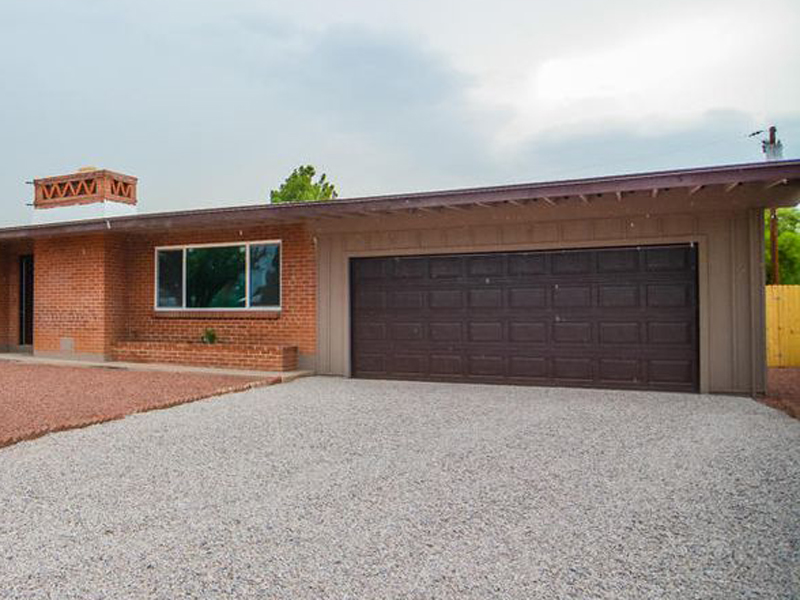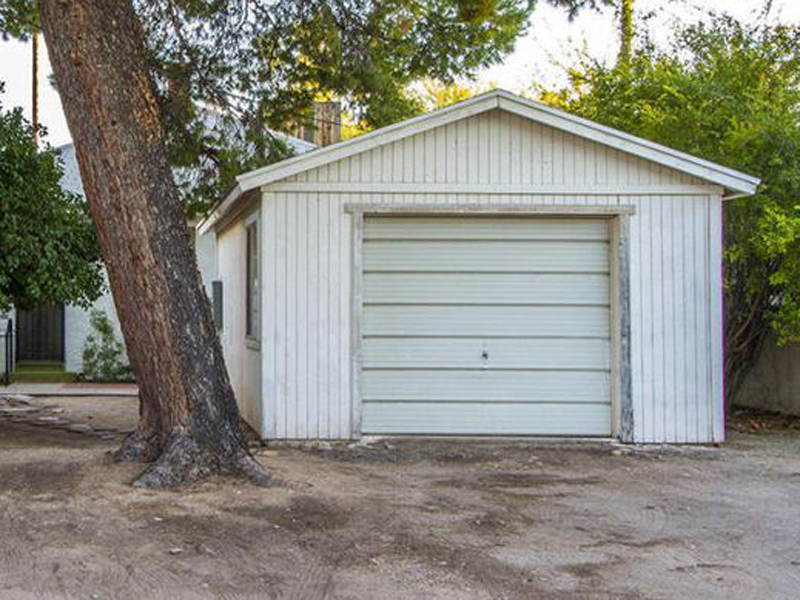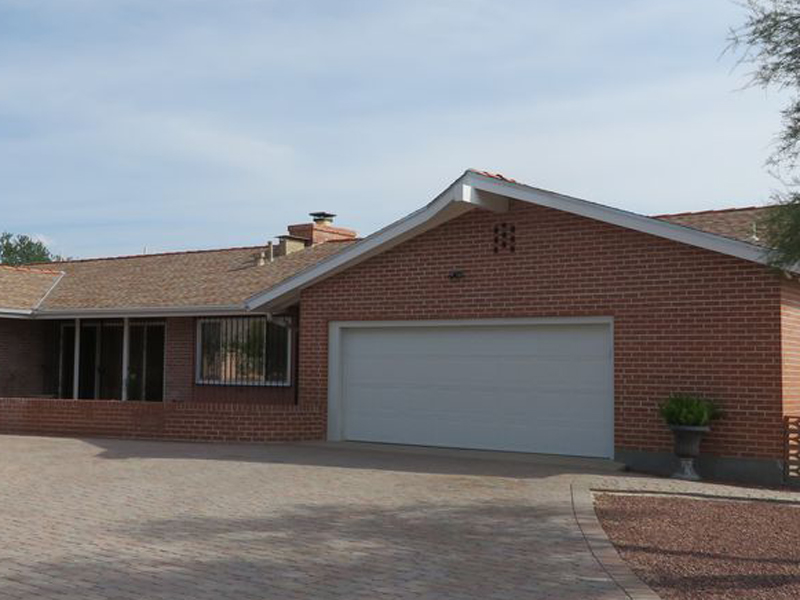Is Your Garage Door Stuck? Right here's What to Do Very first
When your garage door will not open, begin with these necessary safety checks prior to attempting any kind of repairs. First, guarantee no one is standing near the door which cars are clear of the opening. Look for noticeable signs of damages like busted panels, curved tracks, or hanging wires. If you see a snapped springtime or drastically harmed parts, quit instantly and call a specialist—-- these repair work need customized tools and proficiency to take care of securely.

Check These 6 Points Before Calling an Expert
Prior to assuming you need expensive repair services, run through this fast diagnostic list that fixes most garage door issues:
-
Power source: Verify the opener is connected in and the electrical outlet is working
-
Remote batteries: Replace dead batteries in your remote
-
Hand-operated lock: Inspect if somebody inadvertently engaged the hand-operated lock
-
Obstructions: Look for debris blocking the door's path or sensing units
-
Emergency launch: Guarantee the red emergency situation cord hasn't been drawn
-
Circuit breaker: Verify the garage circuit hasn't stumbled
These simple checks fix approximately 70% of garage door problems without needing professional treatment.
10 Usual Factors Your Garage Door Will Not Open
Recognizing why your garage door opener isn't functioning helps you choose the ideal remedy. Below are one of the most regular reasons house owners encounter:
Dead remote batteries represent the simplest fix—-- when batteries pass away, the remote can not send out signals to the opener. Power blackouts or stumbled breakers cut electrical power to the motor. Damaged springtimes prevent the door from raising properly and require immediate specialist attention. Sensor imbalance causes security systems to obstruct door operation. Track obstructions quit rollers from moving efficiently. Electric motor overload triggers automatic shutoffs when the opener detects resistance. Restriction button problems puzzle the opener regarding door setting. Wire damages disrupts the lifting system. Weather-related concerns impact door motion throughout extreme temperature levels. Part wear from age slowly lowers system performance.
Problem # 1: Dead Remote Control Batteries
When your wall button functions but your remote doesn't, dead batteries are normally the perpetrator. Most garage door remotes make use of either 3-volt lithium or 12-volt alkaline batteries. Remove the back cover of your remote and check the battery type. Change with fresh batteries and test the remote. If it still doesn't work, you might need to reprogram it to your opener. Consult your opener's handbook for specific reprogramming directions, as the process differs by maker.
Trouble # 2: Power Supply Issues
Garage door power issues often originate from loosened links or tripped circuits. Check that the opener is securely connected into its electrical outlet—-- vibration can loosen up links over time. Examine the electrical outlet with another device to validate it's working. Analyze your home's breaker box for stumbled circuits, particularly if you have actually experienced tornados or power fluctuations. GFCI outlets may have tripped and need resetting. If the opener has power yet will not react, the concern most likely lies elsewhere in the system.
Trouble # 3: Broken or Damaged Springs
Broken garage door springtimes are among one of the most hazardous parts to manage. If you listen to a loud bang from your garage or observe the door feels very hefty when trying to lift manually, a springtime has actually most likely snapped. Torsion springtimes run flat over the door, while expansion springtimes rest on either side. Never ever attempt spring fixings yourself—-- these parts store incredible tension that can cause major injury or death. Expert substitute generally sets you back $150-$300 yet guarantees your security.
Problem # 4: Obstructed Safety And Security Sensors
Modern garage doors feature security sensors that protect against closure when things are discovered. These sensors can quit the door from opening if they're filthy, misaligned, or blocked by debris. Clean sensing unit lenses with a soft cloth and guarantee nothing blocks the undetectable light beam in between them. Inspect that sensors are properly lined up—-- a lot of have sign lights that reveal connection condition. Sensor problems commonly solve with simple cleaning and modification.
Issue # 5: Track Obstructions or Damages
Garage door tracks guide rollers as the door goes up and down. Dust, particles, old oil, or tiny things can jam the system. Examine tracks visually and get rid of any blockages with a brush or cloth. Try to find dents, flexes, or bending that might hinder smooth operation. Minor track modifications are feasible for handy homeowners, yet substantial damages calls for expert repair service to prevent further troubles or security dangers.
Trouble # 6: Garage Door Opener Electric Motor Issues
When the garage door motor runs but the door does not relocate, a number of issues could be accountable. The electric motor might be overloaded and turning off as a precaution. Equipment wear, particularly in older systems, can avoid proper procedure. Chain or belt drive troubles influence power transmission. If you listen to uncommon grinding, clicking, or humming audios, stop making use of the opener promptly. Electric motor fixings often cost more than substitute, particularly for units over 10 years old.
Step-by-Step DIY Troubleshooting Overview
Follow this systematic strategy to garage door troubleshooting while prioritizing safety and security throughout the process:
Step 1: Test the wall switch initially. If it works but the remote does not, focus on remote problems. If neither jobs, inspect power supply.
Action 2: Analyze the hands-on release cord. If it's been pulled, the opener is disengaged from the door. Push the trolley back to reconnect.
Step 3: Manually evaluate the door by disengaging the opener and trying to raise the door by hand. It needs to relocate smoothly and stay in place when half-open.
Tip 4: Check visible parts for damages, paying unique attention to springtimes, cords, and tracks.
Tip 5: Examine all security functions including sensing units, limitation buttons, and auto-reverse functions.
Step 6: Test various controls (remote, wall switch, keypad) to separate the trouble source.
Constantly wear safety glasses and job handwear covers when performing examinations, and never ever effort repair work on springtimes or high-tension elements.
When to Call an Expert vs. do it yourself Solutions

Understanding when to call a garage door expert versus attempting do it yourself fixings protects both your security and your purse. Deal with these concerns on your own: dead remote batteries, power supply issues, minor track cleansing, sensing unit cleansing and positioning, and basic lubrication.
Never try these fixings on your own: springtime replacement or change, cord repairs, significant track realignment, electric circuitry concerns, opener electric motor substitute, or any kind of fixing entailing high-tension components. Specialist technicians have specialized devices, training, and insurance coverage to manage hazardous repairs safely.
Consider repair work costs versus substitute expenses, specifically for doors over 15 years old. Modern garage doors use better safety functions, power effectiveness, and dependability than older designs.
Emergency Situation Garage Door Solutions
When you're stuck with a garage door that will not open up and require instant gain access to, follow these emergency situation treatments:
Guidebook Procedure: Pull the red emergency launch cable to disengage the opener. This permits manual procedure however needs correct strategy to prevent injury. Lift the door gradually and equally, utilizing leg muscular tissues rather than your back. The majority of residential doors evaluate 100-150 pounds, making them convenient for the majority of grownups.
Temporary Fixes: If the door opens by hand yet won't stay up, prop it open with sawhorses or clamps—-- never use your body or cars as assistances. For doors that will not shut totally, make certain the best lubricant for garage door rollers and hinges opening is secured if you must leave.
Emergency situation Solution: Many garage door firms use 24/7 emergency service for situations involving safety worries, trapped automobiles, or complete system failures. While extra costly than normal solution phone calls, emergency fixings give instant services when required most.
Security Caution: What NOT to Do
Garage door security needs understanding hazardous repair work that need to never ever be attempted by home owners:
Never ever attempt to repair springs—-- they keep sufficient energy to trigger fatal injuries when they break or are incorrectly taken care of. Don't force a stuck door—-- this can damage the opener, tracks, or door panels, creating much more expensive problems. Avoid bypassing safety and security features—-- sensors and auto-reverse devices protect against serious injuries and property damages.
Do not overlook odd noises—-- grinding, scraping, or banging audios show troubles that aggravate gradually. Never make use of the door if cables are torn or damaged—-- the door might fall unexpectedly. Don't attempt electric repairs unless you're a qualified electrical contractor—-- garage door openers utilize both 120V family present and low-voltage control circuits.

Precautionary Upkeep to Prevent Future Issues
Normal garage door maintenance protects against most usual issues and expands system lifespan dramatically:
Month-to-month Tasks: Visual assessment of all components, checking auto-reverse safety functions, examining and tightening hardware, and cleaning tracks and sensors.
Quarterly Jobs: Lubing all relocating get rid of suitable garage door lube, testing handbook procedure, and examining weather condition securing.
Annual Tasks: Professional assessment and tune-up, springtime adjustment if required, and opener maintenance including belt or chain adjustment.
Seasonal Jobs: Preparing for weather extremes, checking insulation, and changing opener setups for temperature level modifications.
Regular upkeep costs much less than emergency situation repairs and ensures reliable procedure year-round.
Garage Door Won't Open Frequently Asked Questions
Why will not my garage door open with the remote however deals with the wall switch?
This typically suggests dead remote batteries, signal interference, or the requirement to reprogram the remote. Inspect batteries initially, after that consult your opener guidebook for reprogramming guidelines.
Can I by hand open my garage door if the power is out?
Yes, draw the red emergency release cord to disengage the opener, after that raise the door manually. Be prepared for the door's complete weight and lift with proper method to prevent injury.
Just how do I recognize if my garage door springtime is damaged?
Indicators consist of a loud bang from the garage, the door feeling very hefty when lifting manually, noticeable voids in the springtime coils, or the door just opening a couple of inches before quiting.
Is it safe to use my garage door if it will not open up all the way?
No, partial operation shows mechanical troubles that could get worse unexpectedly. Quit utilizing the door and have it checked by an expert to stop further damages or injury.
What should I do if my garage door opens however will not shut?
Inspect safety and security sensing units for blockages or misalignment, examine the tracks for particles, and check the auto-reverse feature. If these do not address the problem, speak with an expert.
Just how much does it cost to fix a garage door that won't open up?
Prices differ extensively depending upon the trouble: battery substitute ($5-$10), professional diagnosis ($50-$100), springtime substitute ($150-$300), or opener replacement ($200-$500).
Can weather impact my garage door's capability to open?
Yes, severe cold can enlarge lubricants and impact steel parts, while warm can create development problems. The majority of problems solve as temperature levels stabilize, yet consistent issues might require professional interest.
Why does my garage door open a couple of inches after that stop?
This normally shows broken springtimes, limitation button issues, or track blockages. The opener's safety and security functions stop procedure when resistance is found, avoiding damages to the motor or door.
Get Professional Aid for Complex Problems
When DIY repairing does not fix your garage door troubles, professional specialists provide the competence and tools needed for risk-free, lasting repairs. Qualified experts diagnose issues accurately, utilize manufacturer-approved components, and give service warranties on their job.
Expert solutions consist of: extensive system examinations, springtime and cable television substitute, opener fixing and replacement, track placement and substitute, electrical troubleshooting, and emergency service telephone calls.
What to expect: in advance prices, licensed and insured technicians, same-day solution for many repair services, and follow-up maintenance recommendations.
Most garage door business supply totally free quotes for significant fixings and can supply immediate options for urgent problems influencing home safety and security or automobile access.
Getting Your Garage Door Working Again
A garage door that will not open does not need to ruin your day or break your budget plan. Start with simple troubleshooting actions like inspecting power, replacing batteries, and taking a look at for evident blockages. Many problems have quick DIY services that restore regular operation within mins.
Nevertheless, acknowledge when expert aid is necessary—-- especially for spring-related issues, electrical issues, or complex mechanical failings. Trying dangerous repair work on your own risks significant injury and commonly creates much more expensive troubles.
Regular upkeep prevents most garage door issues and makes certain reputable operation for several years to find. When problems do take place, address them without delay to avoid more expensive repairs and keep your home's safety and ease. Whether you need a simple battery substitute or total system overhaul, services exist to obtain your garage door functioning smoothly once more.